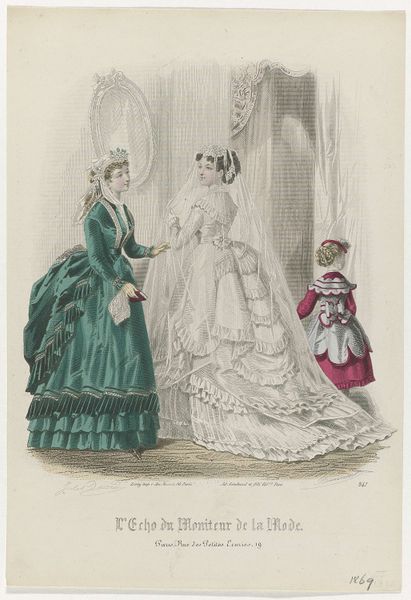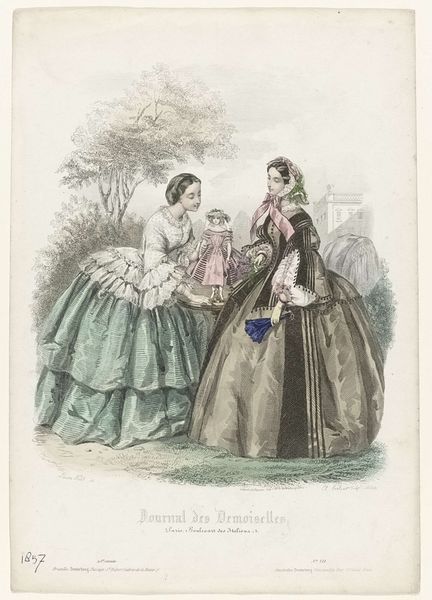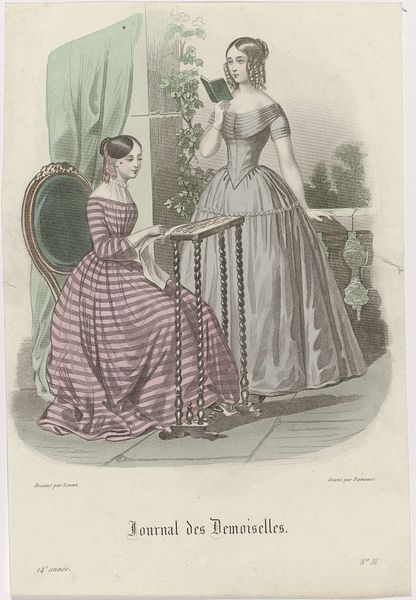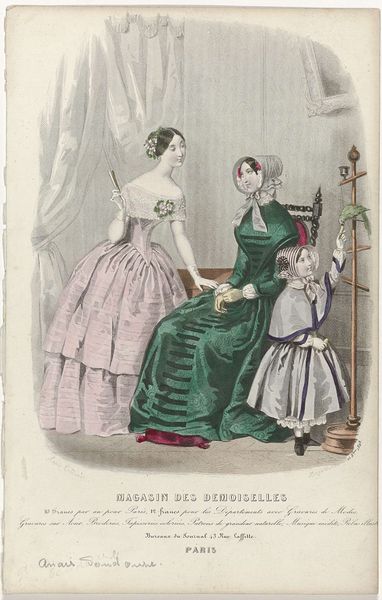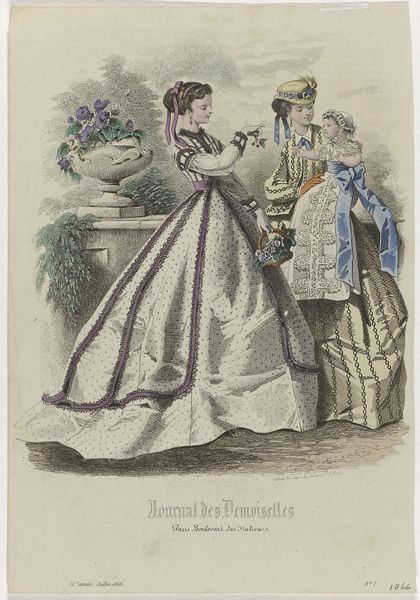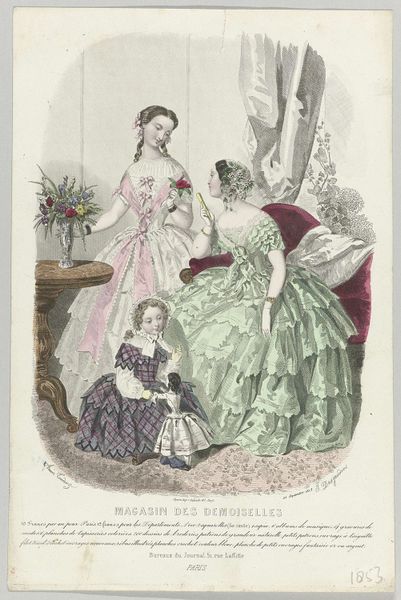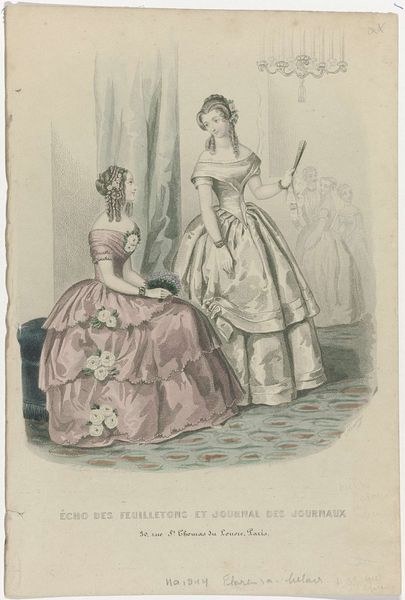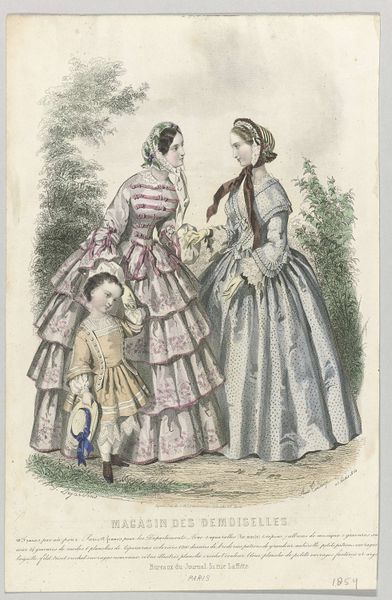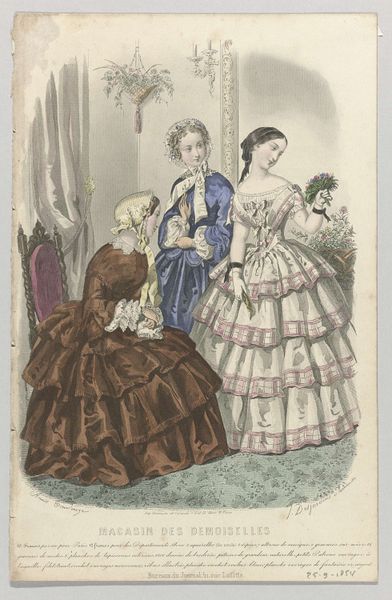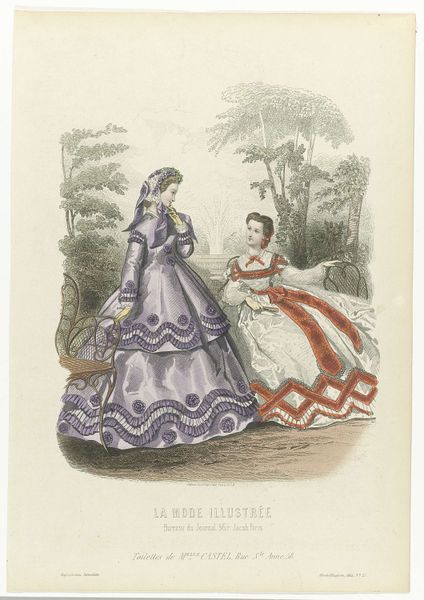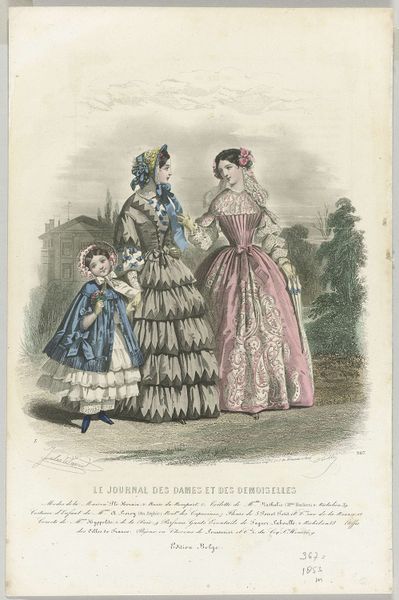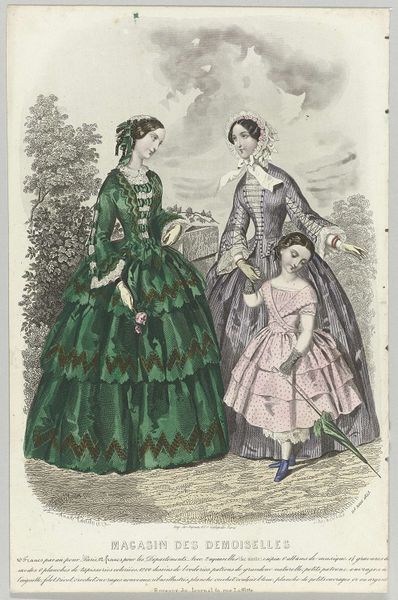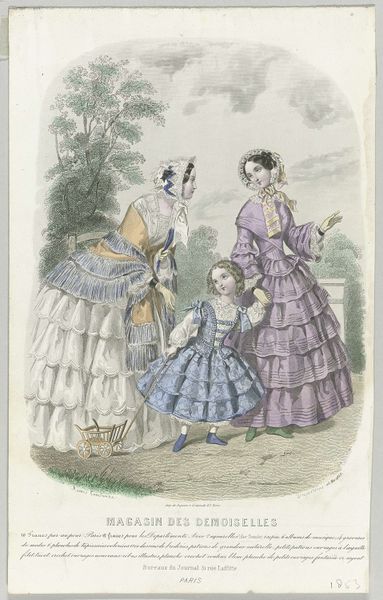
Dimensions: height 282 mm, width 200 mm
Copyright: Rijks Museum: Open Domain
Curator: The piece before us, entitled "Journal des Demoiselles, Septembre 1865," presents us with a glimpse into mid-19th century Parisian fashion through the lens of a popular women's magazine. The watercolor print, made in 1865, captures not only style but also societal aspirations for women and girls at the time. Editor: It’s quite lovely; immediately, I’m struck by the air of refined domesticity. The soft hues and almost idyllic composition evoke a sense of quiet gentility. Curator: Absolutely, and it's vital to read beyond this surface level to unearth the social power structures embedded within the representation of ideal femininity. Think about how magazines like "Journal des Demoiselles" functioned to prescribe and reinforce class distinctions and gendered expectations. Editor: The dresses themselves offer a rich symbolism, wouldn’t you say? The mother in teal—the older style and heavier fabric perhaps indicate experience—and the younger woman in the flowing lavender gown, hinting at a future still being written? Then there's the young girl carrying a small woven basket, an ancient symbol of nurturance. Curator: Precisely! And these visual signifiers of gender are deeply intertwined with the period's restrictive social norms. Note the detail of her basket and what its placement in the image can communicate about what expectations may have been imposed on girls at the time. This wasn't merely about pretty dresses; it was about controlling and channeling female identity. Editor: The watercolor’s technique only intensifies this effect. The gentle strokes and luminous washes suggest a certain fleeting beauty, and, coupled with a lack of detail, may denote impermanence. These qualities together suggest a fleeting moment to preserve an ideal—but perhaps unattainable—memory. Curator: A potent observation! And what these images do not show becomes equally significant. What about the female workforce laboring to make these gowns or the imperialistic networks needed to source the fabrics and dyes? Fashion isn't innocent; it always reflects power dynamics. Editor: In that case, by taking a second look, I'm even more conscious of the layers of complexity and expectation hidden within such an unassuming scene. Thanks to you, it now prompts many additional considerations beyond just a pleasant moment frozen in time. Curator: It's a dialogue that art always invites, isn't it? What seems at first to be simply aesthetically pleasing quickly unravels into an investigation of historical forces, identities, and underlying power struggles, urging a deeper look at the beautiful yet burdened existence that underpinned femininity then.
Comments
No comments
Be the first to comment and join the conversation on the ultimate creative platform.
